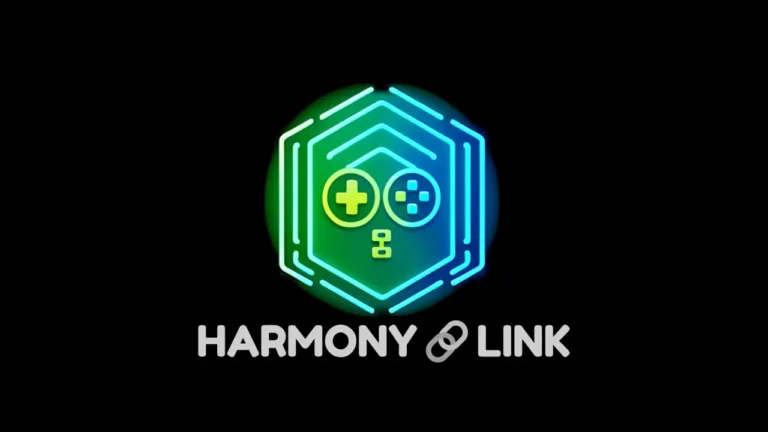Introduction
The latest update HarmonyLink 2, has been unveiled alongside a groundbreaking plugin for the Unreal Engine Marketplace. This iteration introduces pivotal changes that significantly enhance the integration process for game development.
What is HarmonyLink?
But what exactly is HarmonyLink, and why is it becoming indispensable for game developers? HarmonyLink serves as a bridge between games and the hardware they run on, providing real-time metrics and allowing for dynamic performance optimization based on the device’s capabilities. This ensures that games can offer the best possible experience, adapting seamlessly to various hardware conditions without additional effort from developers.
Re-engineered for Seamless Integration
In response to valuable community feedback, the architecture of HarmonyLink has been transformed. It is now available as a single dynamic link library (DLL), eliminating the previous client-server architecture. This shift allows for direct integration into games, streamlining the development process.
Overcoming Development Challenges
Transitioning to version 2.0 presented a series of challenges, particularly the shift from Rust to C++ to facilitate an Application Binary Interface (ABI) that enables software intercommunication. This move was driven by the compatibility and ease of integration offered by C++, which involved a deep dive into the complexities of DLL creation with CMake.
Addressing the challenge of hardware and OS querying within the Wine environment, especially for handheld devices like the Steam Deck, required innovative solutions. Due to Proton’s compatibility layer, traditional detection methods were insufficient. A new strategy was devised to identify devices by analyzing various system characteristics, allowing for accurate detection and operational mode differentiation.
Platform Support and Community Contributions
The project now openly invites the community to develop and maintain a version for Mac. This collaborative approach highlights the project’s commitment to broad accessibility and continuous enhancement through community involvement.
The Unreal Engine Store Plugin
To further support and develop the project, a new plugin is now available on the Unreal Engine Marketplace for $9.99. This plugin not only facilitates easier integration of HarmonyLink into game projects but also serves as a means to support the ongoing development of the project. Your contribution by purchasing the plugin will help ensure the sustainability and growth of the project.
A Glimpse into HarmonyLink 2 in Action
To showcase HarmonyLink 2.0 capabilities, a video example has been included in this blog post. This demonstration highlights the seamless integration and performance enhancements that the project brings to game development, offering a firsthand look at its impact in action.
Conclusion
The evolution of HarmonyLink to version 2.0 is a significant advancement in the realm of game development and integration. By simplifying the development process, embracing community contributions, and providing essential tools for optimization, HarmonyLink is setting a new standard for creating immersive gaming experiences on handheld devices. As the platform continues to grow, its role in shaping the future of gaming remains unequivocally important.
Dive Deeper into HarmonyLink 2.0
As we wrap up this exploration of HarmonyLink 2.0, remember that the journey doesn’t end here. For those eager to experience the cutting-edge capabilities of HarmonyLink firsthand, the marketplace plugin awaits your discovery on the Unreal Engine Marketplace. Securing this plugin not only equips you with a powerful tool to enhance your game development process but also supports the continuous growth and innovation of HarmonyLink. Explore the plugin here.
If contributing to groundbreaking projects excites you, consider joining the HarmonyLink community on GitHub. Your insights, code, and feedback can play a crucial role in shaping the future of gaming technology. Engage with us and other contributors by visiting HarmonyLink’s GitHub page.
For those who may have missed the initial announcement or are keen to revisit the moment HarmonyLink 2.0 was unveiled, the original post provides a wealth of information and insights into the potential of the Steam Deck and more. Catch up on the announcement here.
Additionally, developers looking to delve deeper into the specifics of the Unreal Engine plugin and perhaps even contribute to its development will find the source code available on GitHub particularly intriguing. This repository not only offers a glimpse into the meticulous development process but also serves as an invitation to contribute to its evolution. Take a closer look at the Unreal Engine plugin code here.
Thank you for taking the time to explore HarmonyLink 2.0 with us. Your participation and support are what propel this project forward, paving the way for innovative developments in the world of gaming.
Extra Reading
While you’re here, why not dive deeper into the tools that shape the world of game development? If you’re on the hunt for the best IDE for your game development projects, you might find our blog post on “Rider – The Best IDE for Game Development?” particularly enlightening. Explore the advantages and features of Rider and see if it stands up to the claim here.

